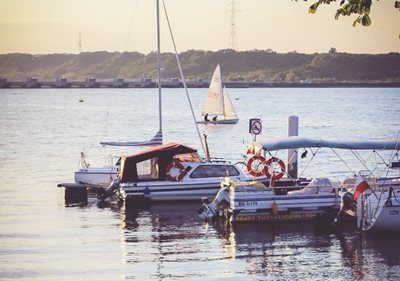 Electric shock could happen when electric current leaks into the surrounding body of water, causing the water to become energized.
Electric shock could happen when electric current leaks into the surrounding body of water, causing the water to become energized.With more electric tools and equipment used near water, many situations call for added vigilance whether you’re a powerboat owner inspecting a part, climbing out of the water using a metal ladder, or having an extension cord on dock to charge a boat’s battery. Even a low level of electric current in the water can be extremely hazardous or fatal to a swimmer.
Here are some safety tips:
- If you are the owner of a structure using electricity around the water (e.g. boat, backyard pool, hot tub, dock), check to ensure ground fault interrupters are functioning properly before each swimming event.
- The metal frame of docks should be bonded to connect all metal parts to the alternating current (AC) safety ground at the power source. That will ensure any part of the metal dock that becomes energized because of electrical malfunction will trip the circuit breaker.
- Maintenance of the electrical system should be done by a Licensed Electrical Contractor familiar with marine electrical codes.
- Consider a “No Swimming” policy near your dock or marina that has electricity. Post “NO SWIMMING, Warning Electric Shock Hazard” signs warning about the potential for electric current in the water.
- Use a plastic ladder, rather than a metal one, to help avoid transferring electricity into water.
- When swimming near any structure on water with live electricity flowing to it, such as marinas, yacht clubs or docks, be sure to check and obey posted signs, as they usually are placed due to fuel and electricity.
In severe weather conditions:
- During lightning and thunderstorms, clear everyone from the water at the first sound of thunder or first sight of lightning.
- Move indoors, large buildings are safer than smaller or open structures, such as picnic shelters or gazebos. Try to avoid showers or change rooms, as water and metal can conduct electricity; avoid windows and metal objects.
- Keep monitoring the weather reports.
Read more water and boating safety tips and resources, and find a swimming or first aid course near you.

